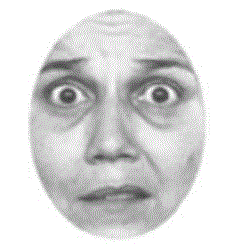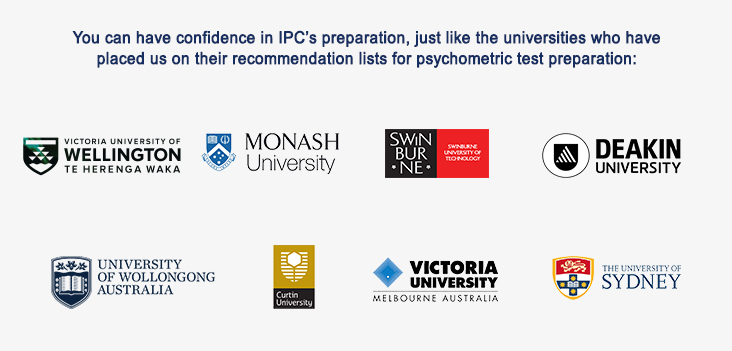Preparation Queensland Fire Department (QFD) tests 2025 (based on real tests)
If you are applying to join Queensland Fire Department (QFD), you will be required as part of your application to take several challenging Psychometric tests developed by Pearson:
Phase 1:
Queensland Fire Department (QFD),will ask you to a complete a timed mechanical test that includes a list of test questions that are based on mechanical principles, such as pullies and gears. Upon successfully completing phase 1, you will be invited to complete phase 2.
Phase 2:
Queensland Fire Department (QFD),will ask you to complete several timed Pearson's VUE ability tests that include three types of test questions:
- Core abilities - this test includes abstract, numerical sequences and verbal association test questions.
- Verbal comprehension test - this test will include sets of passages. Each passage will have several questions to answer based on what you read in the passage.
- Written comprehension test.
Phase 3:
Queensland Fire Department (QFD),will ask you to complete two special clinical personality and one emotional intelligence test to identify whether you have clinical issues that might prevent you from becoming a firefighter:
- Standard personality test which measures 30 different personality traits.
- A special clinical personality test measuring personality disorders
- An emotional intelligence test measuring your EI.
Phase 4:
A group assessment and a clinical behavioural based interview.
What is the mechanical test with Queensland Fire Department (QFD)?
The mechanical test is a timed test that includes questions that measure your understanding of mechanical concepts, such as pullies, gears, weight distribution etc.
The main challenge of the mechanical test is the timer. The timer is set so only 2-3% of the population can complete this test on time and have all the questions right. Therefore, your task is to try to get as many test questions as you can correct.
What is the Core Abilities test and Reading Comprehension test with Queensland Fire Department (QFD)?
The Core Abilities test is a timed test that include 20 questions to be completed in 15 minutes. The main challenge of this test is the timer. The timer is set so only 2-3% of the population can complete this test on time and have all the questions right. Therefore, your task is to try to get as many test questions as you can correct.
QFD's verbal reasoning test questions in the Core Abilities test:
The Verbal reasoning test questions in the Core Abilities assessment are designed to measure your verbal reasoning skills. The verbal test questions includes the word association test question style:
‘In this type of verbal test question, you are given two words that are associated in some way (i.e. an analogy) and a list of options. Your task is to select which of the options is most like the given word association.
Let’s look at an example:
Cane : walk, as eyeglasses ?
A. taste
B. hear
C. colour
D. run
E. sun
F. observe
The association between ‘cane’ and ‘walk’ is that the cane is an ancillary instrument to assist someone to walk. Therefore, we need to find a word in the list with a similar association to ‘eyeglasses’. ‘Eyeglasses’ are an ancillary instrument to help someone ‘observe’, so this forms the same relationship as exists between ‘cane’ and ‘walk’.
QFD's reading comprehension test
The reading comprehension test questions are designed to measure your ability to understand written text. The verbal test questions includes passages and questions which you need to answer based on the passage you read. :
‘In this style of verbal test question, your task is to select which of the options is most accurate given the information you read in the passage. Let's review the following example:
Please read the following text:
In epistemology, the Munchausen trilemma is a thought experiment used to demonstrate the impossibility of proving any truth, even in the fields of logic and mathematics. If it is asked how any knowledge is known to be true, proof may be provided. Yet that same question can be asked of the proof, and any subsequent proof. The Munchausen trilemma is that there are only three options when providing proof in this situation: (a) the circular argument, in which theory and proof support each other; (b) the regressive argument, in which each proof requires a further proof, ad infinitum; and (c) the axiomatic argument, which rests on accepted precepts. The trilemma, then, is the decision among the three equally unsatisfying options.
The name Munchausen Trilemma was coined in 1968 by the German philosopher Hans Albert in reference to a trilemma of “dogmatism versus infinite regress versus psychologism” used by Karl Popper. It is a reference to the problem of ‘bootstrapping’, based on the story of Baron Munchausen pulling himself and the horse on which he was sitting out of a mire by his own hair.
Based on the text you just read, which one of the following statements can be inferred from the text?
A. The Munchausen Trilemma is a proof in mathematics and logic of any knowledge.
B. Karl Popper used a trilemma of arguments: ‘the circular versus the regressive versus the axiomatic’.
C. The circular argument is one in which theory and proof support each other.
D. Hans Albert was a colleague of Karl Popper.
E. Karl Popper dragged a horse from a bog by pulling on its hair.
The correct answer is C, as the text explicitly says, “the circular argument [is one] in which theory and proof support each other”.
QFD's abstract test questions in the Core Abilities test:
The Abstract test questions in VUE Core Abilities test are also timed and are forced-choice (which means that each question has between 4 to 5 answer options and only one is correct). All Abstract test questions are non-verbal problems, which means that there is no text to read. Each Abstract test question displays a group of shapes that have some common patterns or rules. Your task is to quickly identify the patterns and logical rules for each group of shapes and then use them to select the correct answer. Each Abstract test question in the Cognitive test has a different group of shapes and different patterns and logical rules.
Here is an example for an abstract reasoning test question:
Let's the following example for a 3 by 3 matrix abstract question. In this question there are 8 shapes in a 3 by 3 table. The 9th shape is missing and your task is to find what it is based on the other shapes.

To solve this question, we need to find the logical rules that apply to the shapes going from left to right or top to bottom. We can see that in each cell in each row contains a black rectangle or box. The last cell in each row is a combination of the first two boxes of the first and second cells. So, if we look at our top row, the first two black boxes in first and middle cells are combined in the last cell to create a vertical black rectangle. Therefore, the missing shape is a full black box which is a combination of the two horizontal black rectangles.

QFD's numerical test questions in the Core Abilities test:
There are 2 types of numerical reasoning test questions in this test:
Type 1 Traditional Numerical Sequences -
This type of numerical test question includes traditional number series, which are a list of consecutive numbers. Each type 1 numerical test question displays a list of numbers and your task is to identify the pattern and logical rules. Using the patterns that you identify, you can correctly select the missing number.
Let’s look at the following example for a numerical test question in the Core Abilities assessment:
Find the missing number in the following set:
144, ? , 48 , 2 , 24 , 4 , 6
To answer this question, we need to identify the pattern in this number series. A pattern is a rule that explains why all numbers are positioned where they are. In this case, we would start analysing the numbers to the right of the missing number, as this side offers us more numbers to work with. First we look at the 3 following numbers - 48, 2 , and 24. Can we see some rule here? Yes, 24 multiplied by 2 is 48. Let's check if this rule applies to the other numbers - 24 , 4 and 6. Yes, as 6 times 4 is 24. If we apply this pattern or rule then 48 times ? is 144. Therefore, the missing number is 144 / 48 = 3.
Type 2 Numerical Sequences in grids -
This type of numerical test questions include numbers sequences that are displayed in triangles or long grids.
Example Numerical Sequences type 2 test question:

To answer this question you need to find the patterns or number sequences in this example. If we examine the numbers in the top line: 4, 12, 36... we can see that each consecutive number is product of multiplying the previous number by 3. For example, 4 x 3 = 12 and 12 x 3 = 36. Based on this the next number will be 36 x 3 = 108. The numbers at the bottom are created by subtracting 3 from the numbers above. For example, 4 - 3 = 1, 12 - 3 = 9, 36 - 3 = 33 and 108 - 3 = 105. The missing number at the bottom will be 108 x 3 = 324 then 324 - 3 = 321. So the missing numbers are 108 and 321.
QFD's personality tests
The first personality test Queensland Fire Department (QFD),will ask you to complete has 240 items and is not timed. Each item has 5 answer options. This test measures 30 different personality traits and offer a personality profile to identify personality risks about you.
The second personality test QFD uses is a special clinical personality test that measures personality disorders. The test includes more than 344 items and is not timed. The test report offers QFD a full clinical personality profile of you. this report focuses on personality disorders such as anti-social behaviour, borderline personality and agressive behaviour.
QFD's emotional intelligence test
The emotional intelligence test has 144 questions and is not timed. This test measures 8 aspects of your emotional intelligence:
- Ability to identify emotions in facial expressions
- Ability to understand use emotions to facilitate behaviour in others
- Ability to identify people's emotions based on their behaviour
- Ability to understand how actions facilitate emotions in others and us
- Ability to identify types of emotions when looking at objects.
- Ability to associate emotions with colours, taste and descriptions.
- Ability to understand how to use emotions to facilitate interactions/relationships with others
- Ability to understand the structure of different emotions.
Example for emotional intelligence test questions:
The emotional intelligence test has a wide range of test questions type or style. In some you will be given faces and you will need to select the correct emotion and level of intensity of this emotion. In other questions, you will be given scenarios and be asked to select the most appropriate response. You will also be shown photos of objects and sceneries and be asked to identify the emotion/s that these photos are likely to elicit in people.
Let's review the following example test question for one of the emotional intelligence test’s sections:
Joan felt stressed, and became a bit anxious when she thought about all the work she needed to do. When her manager brought her an additional project, she felt ____. (Select the best choice.)
a) Overwhelmed
b) Depressed
c) Ashamed
d) Self-conscious
e) Jittery
The correct answer is overwhelmed. Joan felt stressed before her manager brought her more work. The additional work given to her when she already was feeling under stress only increased the feeling and made her overwhelmed.
Another style of test questions in the emotional intelligence test is:

How much is each feeling below expressed in this picture?
Happy 1-5
Sad 1-5
Fear 1-5
Anger 1-5
Disgust 1-5
Here you need to analyse the content and colours to identify the correct emotions and the intensity of each emotion on a scale of 1 to 5.
Another example for a test question in the emotional intelligence is:

How much is each feeling in the list below expressed by this face?
Happiness (1-5)
Sadness (1-5)
Fear (1-5)
Anger (1-5)
Disgust (1-5)
Here you need to analyse the facial expression to identify the correct emotion and the intensity of the emotion on a scale of 1 to 5.
The Challenge with the emotional intelligence test:
Many job applicants find the emotional intelligence test very challenging due to the following reasons:
- The test questions are very different from what people are used to.
- The test asks you to identify emotions using facial expressions and photos of sceneries, which is a task that people feel unequipped to complete.
- The test questions require people to deal with things outside their comfort zone.
Preparations for Queensland Fire Departments (QFD) tests (mechanical test, core abilities test and reading comprehension test), group assessment and interview:
The Institute of Psychometric Coaching has developed a variety of tailored preparations to ensure you are ready for your tests with Queensland Fire Department (QFD),
- Bsed on real tests used.
- Developed by senior Psychometricians who are very experienced with QFD's tests.
Our professional preparations include:
QFD's online practice mechanical tests, core abilities tests and reading comprehension tests :
- A large pool of timed practice Mechanical tests online –
- A large pool of abstract reasoning test questions based on the Core Abilities assessment
- A large pool of verbal reasoning test questions based on the Core Abilities assessment
- A large pool of numerical reasoning test questions based on the Core Abilities assessment
- All practice tests are timed to give you a similar experience to your real tests.
- You will have step by step solutions at the end of each practice test.
- Practice Work Safety test based on real test questions.
- Test scores in comparison to others.
- Feedback on how to improve.
- Immediate Access.
QFD's mechanical test, core abilities tests and reading comprehension test courses:
- Special mechanical, abstract, verbal and numerical tests' courses online with all the knowledge you need to pass QFD's’ tests.
- Abstract Reasoning Test Course online with some example test questions.
- Verbal Reasoning Test Course online with some example test questions.
- Numerical Reasoning Test Course with some example test questions.
- Special Work Safety personality test course with all the knowledge you need to pass Queensland Fire & Rescue's Work Safety test
- Immediate Access.
QFD's 1-on-1 tutoring for your core abilities test, reading comprehension test, mechanical tests, personality tests, emotional intelligence test, group assessment & interview:
- Delivered by expert Australian Psychometric test trainers.
- Face to face (In Melbourne and Sydney) or via Teams live.
- You will learn with us how to get ready for your personality tests and emotional intelligence test.
- You will get special material and practice questions for your personality, emotional intelligence and cognitive tests.
- Includes an analysis of your weaknesses.
- Working with you to ensure you demonstrate your full potential and capabilities in QFD’s tests.







